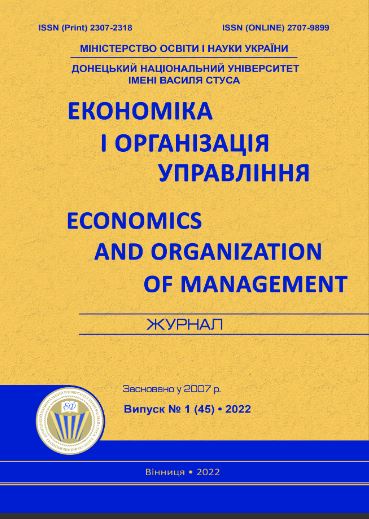Management of financial inclusion models in the context of global digitalization development
DOI:
https://doi.org/10.31558/2307-2318.2022.1.13Keywords:
financial inclusion; digitalization; digital finance; digital economics; regression analysis; comparative analysisAbstract
The article is devoted to the study of the impact of digital finance on the inclusive development of countries. It is stated that digital finance should improve the well-being of people and businesses that have official bank accounts and funds in their bank accounts for many financial transactions. The article systematizes the existing approaches to the definition of "financial inclusion". A comparative analysis of the regression coefficients showed that the selected factors have a greater impact on the development of high-income countries than on lower-income countries, and the direction of influence is the same for both groups of countries. The existing benefits of digital finance, which should improve the well-being of people and businesses, are discussed. The positive impact of digital finance on inclusion has been shown to provide access to global value chains, supply of goods and services; reducing the asymmetry of information on credit and savings and investment opportunities; formation of an informal insurance network.
References
Digital Finance for all: Powering inclusive growth in emerging economies. McKinsey, 2016
Global Findex Report 2017. World Bank Group.
Demirguc-Kunt, A. & Klapper, L. (2012), “Measuring Financial Inclusion, the Global Findex Database”, The World Bank.
Wharton Public Policy Initative. (2017). Financial Exclusion: Why it is More Expensive to be Poor. [online] Available at: https://publicpolicy.wharton.upenn.edu/live/news/1895- financial-exclusion-why-it-is-more-expensive-to-be/for-students/blog/news.php.
Wang, Y. (2018). Empirical Research of Poverty Alleviation Effects of Digital Inclusive Finance from the Perspective of Internet—Based on 2011-2015 Provincial Panel Data. DEStech Transactions on Economics, Business and Management.
Aron, J. (2018). Mobile Money and the Economy: A Review of the Evidence. The World Bank Research Observer, 33(2), pp.135-188.
Jack, W. and Suri, T. (2014). Risk Sharing and Transactions Costs: Evidence from Kenya's Mobile Money Revolution. American Economic Review, 104(1), pp.183-223.
Barbesino, P., Camerani, R., & Gaudino, A. (2005). Digital finance in Europe: Competitive dynamics and online behaviour. Journal of Financial Services Marketing, 9(4), 329e343.
United Nations. (2016). Digital financial inclusion. international telecommunication union (itu), issue brief series, inter-agency task force on financing for development, July. United Nations. Available at: http://www.un.org/esa/ffd/wp-content/uploads/2016/01/DigitalFinancial-Inclusion_ITU_IATFIssue-Brief.pdf.
World Bank. (2014). Digital finance: Empowering the poor via new technologies, April 10. Available at: http://www.worldbank.org/en/news/feature/2014/04/10/digital-financeempowering-poor-new-technologies.
Scott, S. V., Van Reenen, J., & Zachariadis, M. (2017). The long-term effect of digital innovation on bank performance: An empirical study of SWIFT adoption in financial services. Research Policy, 46(5), 984e1004.

